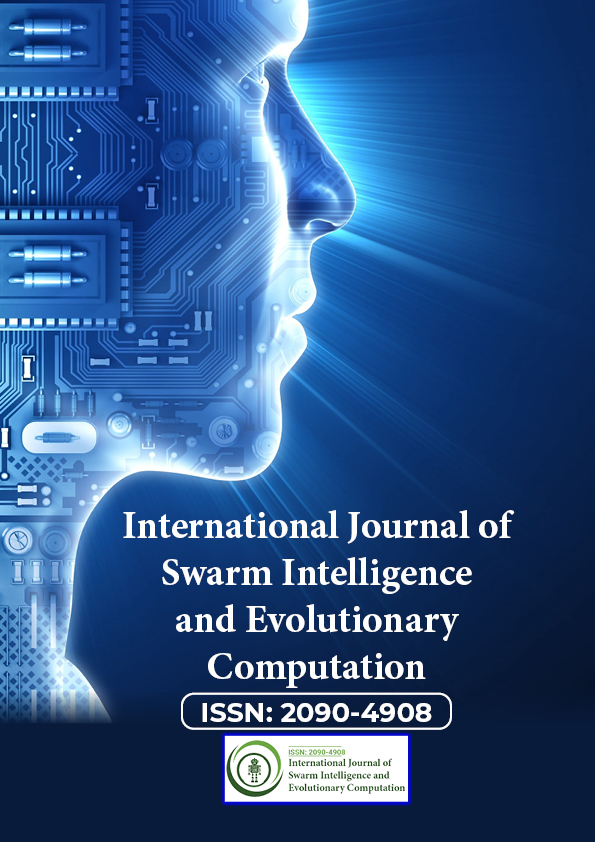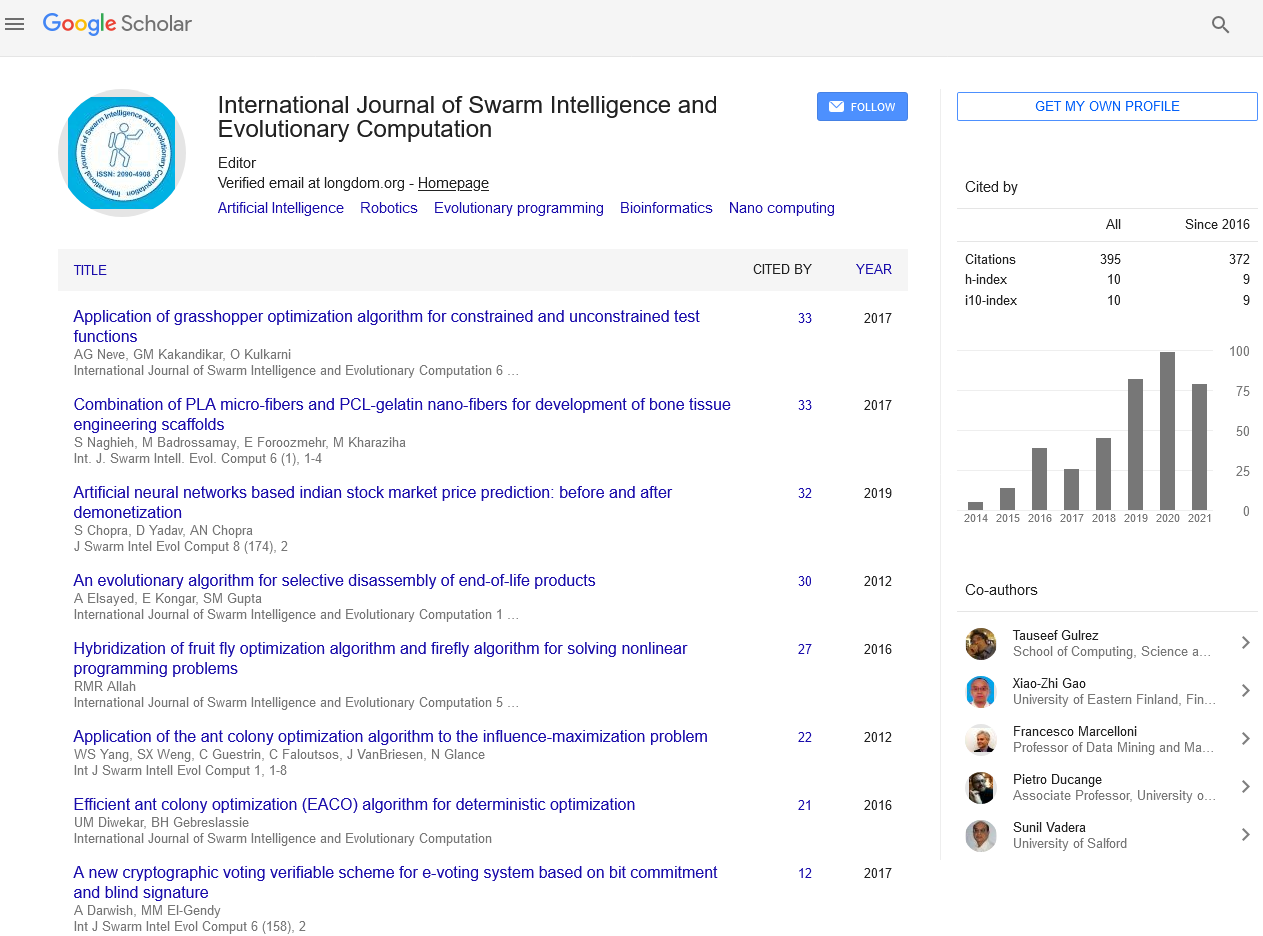Indexed In
- Genamics JournalSeek
- RefSeek
- Hamdard University
- EBSCO A-Z
- OCLC- WorldCat
- Publons
- Euro Pub
- Google Scholar
Useful Links
Share This Page
Journal Flyer

Open Access Journals
- Agri and Aquaculture
- Biochemistry
- Bioinformatics & Systems Biology
- Business & Management
- Chemistry
- Clinical Sciences
- Engineering
- Food & Nutrition
- General Science
- Genetics & Molecular Biology
- Immunology & Microbiology
- Medical Sciences
- Neuroscience & Psychology
- Nursing & Health Care
- Pharmaceutical Sciences
Perspective - (2022) Volume 11, Issue 7
Algorithmic Information Dynamics and its Limitations
Ehshan Wang*Received: 16-Jul-2022, Manuscript No. SIEC-22-17815; Editor assigned: 18-Jul-2022, Pre QC No. SIEC-22-17815(PQ); Reviewed: 05-Aug-2022, QC No. SIEC-22-17815; Revised: 16-Aug-2022, Manuscript No. SIEC-22-17815(R); Published: 26-Aug-2022, DOI: 10.35248/2090-4908.22.11.265
Description
Algorithmic Information Dynamics (AID) is a probabilistic algorithmic paradigm for causal discovery and analysis. It allows a numerical solution to inverse issues based or motivated by algorithmic probability assumptions. AID researches dynamical systems in software space, where all feasible computable models can be identified or approximated under the idea that discrete longitudinal data, such as particle orbits in state and phase space, can approximate continuous systems using Turingcomputable methods. AID combines perturbation analysis and algorithmic information theory to drive a search for sets of models that are compatible with observations, as well as to precompute and use those models as testable generative processes and causal fundamental principles underlying data and systems. AID is an alternative or supplement to existing experimental inference approaches and methods, such as statistical machine learning and classical information theory.
AID ties to and crosses other active research topics such as logical inference, causal reasoning, and neuro-symbolic computation. AID investigates how changes in observed phenomena over time as a result of a system evolving or being externally perturbed affect candidate discrete computable equations as generating processes. Other fields connected to AID include computational mechanics and programme synthesis. AID, on the other hand, does not rely on graphical representations or (sometimes inaccessible) empirical calculations of mass probability distributions, as do graphical approaches such as Bayesian networks. AID includes the foundations and strategies that make algorithmic information and complexity more relevant to scientific discovery and causal analysis. In contrast to other approaches, such as Pearl's docalculus, algorithmic information dynamics can aid in the beginning step of cause discovery and can generate entirely unsupervised hypotheses from causal computable models. It also includes tools for investigating the algorithmic impacts that perturbations to systems and data may have on their underlying computable models, essentially giving a framework for causal analysis akin to the do-calculus but without the need of standard probability distributions. AID can be used to replace or supplement other approaches to causal analysis.
The Coding Theorem Method (CTM) seeks to embrace Turing universality and investigate the space of computer programmes capable of capturing qualities other than statistical patterns. The method then pumps it into the generative models that support a natural or artificial phenomenon, in the usual scientific manner— whereas in statistical and probabilistic approaches, the part of an object's or state's probabilistic content that belongs to the model itself and the part that belongs to the explanation of the possible explanatory models have traditionally been conflated. While with AID there is no probabilistic content at the core of the candidate generative model, only at the level of the universal distribution and also AID by way of CTM and Block Decomposition Method (BDM) provides the means to implement other computational-mechanical approaches, including potentially Crutchfield's, as the means to mine the space of computable finite (deterministic or stochastic) automata.
Limitations
The computer resources required to compute CTM, which is at the heart of AID, limit the size of its application, while BDM extends and combines CTM with other computable measures, including Shannon entropy itself. One of the most active areas of AID research is finding techniques to make algorithmic measures more relevant and feasible shortcuts towards the computation of the computable region in the un-computable space that is relevant for scientific applications.
Citation: Wang E (2022) Algorithmic Information Dynamics and its Limitations. Int J Swarm Evol Comput. 11:265.
Copyright: © 2022 Wang E. This is an open-access article distributed under the terms of the Creative Commons Attribution License, which permits unrestricted use, distribution, and reproduction in any medium, provided the original author and source are credited.


